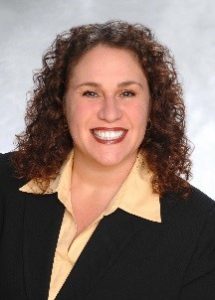HOW TO GET THAT BETTER JOB
Security means different things for different people. Ultimately, all definitions are correct because the sense of security is personal: where I feel secure, someone else may not and vice versa. As many definitions as there are for security there are different roles in frontline security.
You are reading this because you are part of the security community. Below is some food for thought as you consider your spot in the security world. If you have decided to be a part of it, it is important to understand where you fit, what you do, and how that contributes to the overall security plan of where you are assigned. The function that you are filling means that people or other assets will be secure, but you are not alone: you have tools and you contribute value.
- Persona consideration: comprehending what your “persona” is looking for in a role in security both if you’re looking to move on to the next role within the profession or outside of it is an essential first step. Answering the following questions will help point you in the direction of a role that makes sense for you:
-
- What sort of training do you want/need?
- What does risk mean for you?
- What is your tolerance to risk?
- Do you like interacting with people?
- Would you rather work alone?
- Where do you want to go?
- Tech saavy: expectations in security are such so that the company that you work for delivers more than “just a person at a site”. A Deloitte study revealed that 47% of companies are currently going digital. This entails that frontline personnel, essential in delivering on services- reporting incidents in real-time, actioning on post orders, etc. – need to understand the “whats” and the “whys” behind technology. As you spot your next role, ask yourself and the recruiter what the technology stack will look like:
-
- Will you have the tools you need to do the job properly?
- How will you be scheduled?
- How do you go about finding what work is available?
- How can you match as closely as possible the desired hours that you want to work with your actual hours worked?
- Learning: knowing what role is a fit for you and what the tools of the trade are is important, but considering what new information you need to learn to secure or even progress in your current position is key too:
-
- Are there technical abilities that you need (i.e. first aid, physical security information management systems)?
- Where can you get that knowledge? Is the training offered “on the job”? If so, is it structured?
- Will you get certification or acknowledgement of any sort once it’s complete?
- Does the company value me having that knowledge?
- Is the knowledge transferable? Are the skills that I am learning useable for other clients, sites, or sectors?
Earlier in my career, I decided to join ASIS International in order to learn the business of security more closely. There, it became obvious to me that in order to achieve my goals as a security professional, I would need to obtain certification. Nowadays, there are many more offered than “just” the CPP (Certified Protection Professional): the PSP (Physical Security Professional), the PCI (Professional Certified Investigator), and the APP (Association Protection Professional, the latest being brand new and perfect for novices to the field of security.
Takeaways:
- As an industry there are numerous opportunities that can be tailored to fit your needs.
- To come up with a professional roadmap, considering the question of whether you are in it for a limited time or a long time is crucial: the answer to that questions and how you optimise your time accordingly are up to you.
Be clear about what you want to do, understand the environment, what motivates you, and take the opportunities that come up.
 Named to IFSEC’s Global Influencers list 2018 for Security Thought Leadership, Mark is a business school graduate, CPP and Member of The Security Institute (MSyI). Mark’s background is in security services, corporate security, consulting and workforce software. A graduate of Concordia University in HR Management and International Business, he progressed to several senior management roles responsible for security business units across Canada, including serving as the Senior Manager for Corporate Security at Canada’s largest telecommunications company. He launched a consulting business focused on physical security for corporate clients, and has been teaching part-time at the Université de Montréal since 2016. Currently, Mark is the Vice-President, Security and Industry, in the software scaleup TrackTik, and volunteers as SRVP Region 6, Chair of the Security Services Council, the Private Security Officer Standard Technical Committee, and the Private Security Company (PSC.1) working group.
Named to IFSEC’s Global Influencers list 2018 for Security Thought Leadership, Mark is a business school graduate, CPP and Member of The Security Institute (MSyI). Mark’s background is in security services, corporate security, consulting and workforce software. A graduate of Concordia University in HR Management and International Business, he progressed to several senior management roles responsible for security business units across Canada, including serving as the Senior Manager for Corporate Security at Canada’s largest telecommunications company. He launched a consulting business focused on physical security for corporate clients, and has been teaching part-time at the Université de Montréal since 2016. Currently, Mark is the Vice-President, Security and Industry, in the software scaleup TrackTik, and volunteers as SRVP Region 6, Chair of the Security Services Council, the Private Security Officer Standard Technical Committee, and the Private Security Company (PSC.1) working group.


 Jaimee K. Wellerstein is a Partner at Bradley & Gmelich LLP, and the Head of the firm’s Employment Department. Jaimee concentrates her practice in representing employers in all aspects of employment law, including defense of wage and hour class actions, PAGA claims, discrimination, retaliation, harassment, wrongful discharge, misclassification, and other employment related lawsuits. She also provides employment counseling and training in all of these areas. Jaimee routinely represents employers in federal and state courts and in arbitration proceedings throughout the state, as well as at administrative proceedings before the Equal Employment Opportunity Commission, the California Department of Labor Standards Enforcement, the United States Department of Labor, and other federal and state agencies. Jaimee assists as a Legal Advisor to CALSAGA, and is a member of ASIS International. She is rated AV-Preeminent by Martindale Hubbel, the highest peer rating available.
Jaimee K. Wellerstein is a Partner at Bradley & Gmelich LLP, and the Head of the firm’s Employment Department. Jaimee concentrates her practice in representing employers in all aspects of employment law, including defense of wage and hour class actions, PAGA claims, discrimination, retaliation, harassment, wrongful discharge, misclassification, and other employment related lawsuits. She also provides employment counseling and training in all of these areas. Jaimee routinely represents employers in federal and state courts and in arbitration proceedings throughout the state, as well as at administrative proceedings before the Equal Employment Opportunity Commission, the California Department of Labor Standards Enforcement, the United States Department of Labor, and other federal and state agencies. Jaimee assists as a Legal Advisor to CALSAGA, and is a member of ASIS International. She is rated AV-Preeminent by Martindale Hubbel, the highest peer rating available.  Shaun Kelly joined Tolman & Wiker Insurance Services in 2005. He specializes in all lines of property and casualty insurance for industries including contract security firms, agriculture, construction, oil and gas. Shaun received a BS in Business Administration with a major in Finance from California State University in Fresno, California. He is an active member of several industry associations, including the Association CALSAGA, the Kern County Builders Exchange and the Independent Insurance Agents of Kern County. Shaun can be reached at 661-616-4700 or skelly@tolmanandwiker.com.
Shaun Kelly joined Tolman & Wiker Insurance Services in 2005. He specializes in all lines of property and casualty insurance for industries including contract security firms, agriculture, construction, oil and gas. Shaun received a BS in Business Administration with a major in Finance from California State University in Fresno, California. He is an active member of several industry associations, including the Association CALSAGA, the Kern County Builders Exchange and the Independent Insurance Agents of Kern County. Shaun can be reached at 661-616-4700 or skelly@tolmanandwiker.com.


